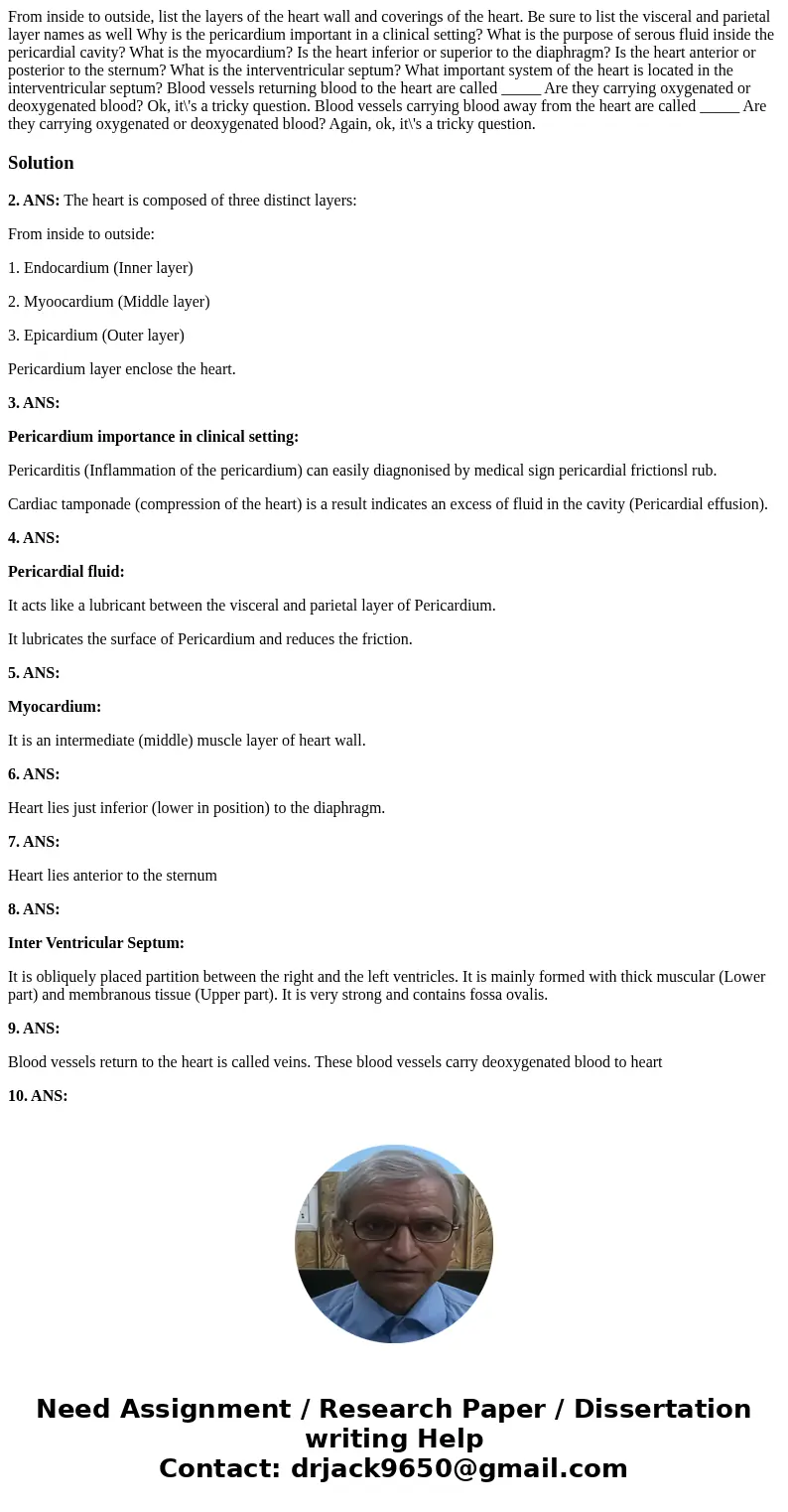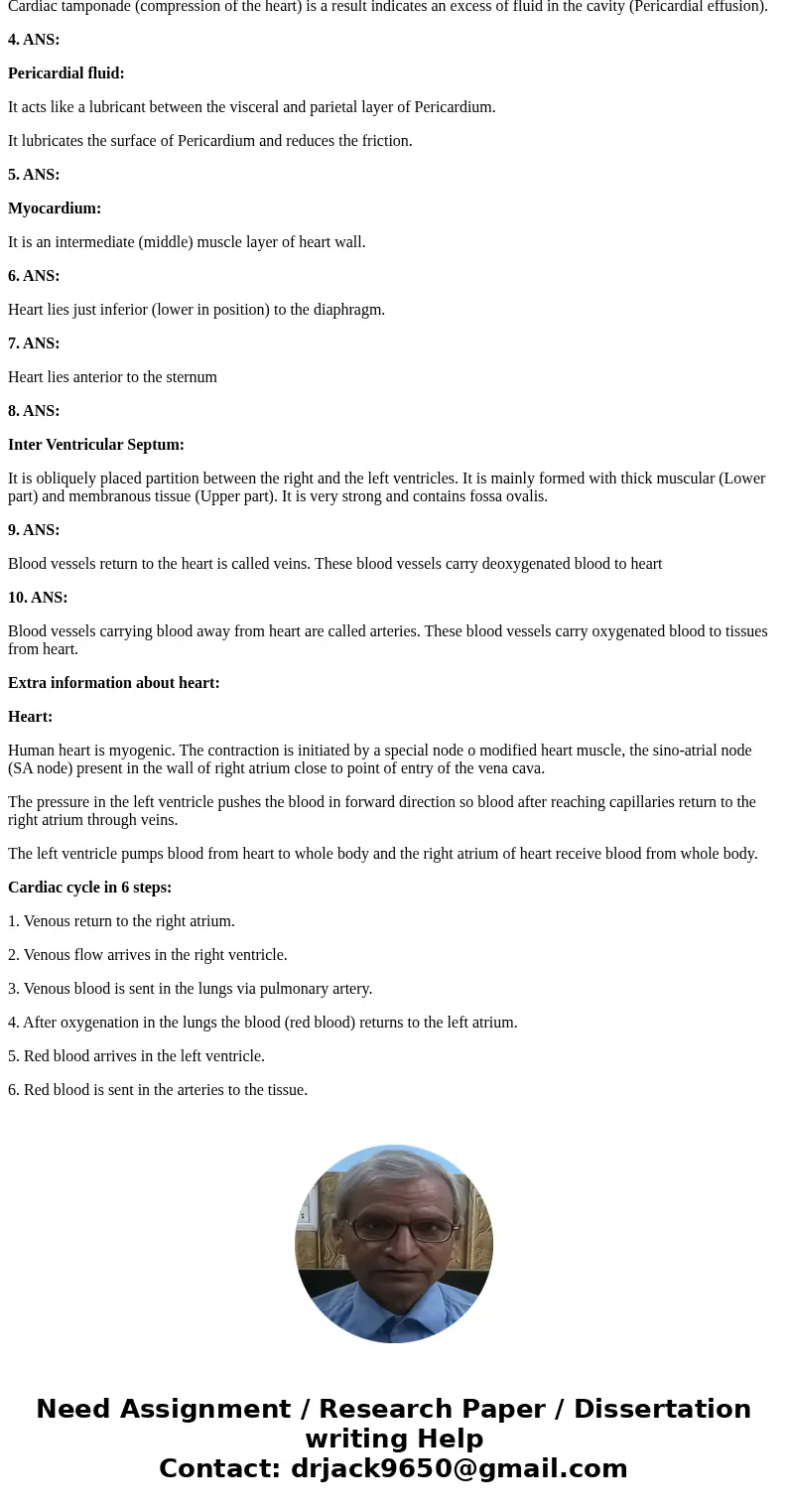From inside to outside list the layers of the heart wall and
Solution
2. ANS: The heart is composed of three distinct layers:
From inside to outside:
1. Endocardium (Inner layer)
2. Myoocardium (Middle layer)
3. Epicardium (Outer layer)
Pericardium layer enclose the heart.
3. ANS:
Pericardium importance in clinical setting:
Pericarditis (Inflammation of the pericardium) can easily diagnonised by medical sign pericardial frictionsl rub.
Cardiac tamponade (compression of the heart) is a result indicates an excess of fluid in the cavity (Pericardial effusion).
4. ANS:
Pericardial fluid:
It acts like a lubricant between the visceral and parietal layer of Pericardium.
It lubricates the surface of Pericardium and reduces the friction.
5. ANS:
Myocardium:
It is an intermediate (middle) muscle layer of heart wall.
6. ANS:
Heart lies just inferior (lower in position) to the diaphragm.
7. ANS:
Heart lies anterior to the sternum
8. ANS:
Inter Ventricular Septum:
It is obliquely placed partition between the right and the left ventricles. It is mainly formed with thick muscular (Lower part) and membranous tissue (Upper part). It is very strong and contains fossa ovalis.
9. ANS:
Blood vessels return to the heart is called veins. These blood vessels carry deoxygenated blood to heart
10. ANS:
Blood vessels carrying blood away from heart are called arteries. These blood vessels carry oxygenated blood to tissues from heart.
Extra information about heart:
Heart:
Human heart is myogenic. The contraction is initiated by a special node o modified heart muscle, the sino-atrial node (SA node) present in the wall of right atrium close to point of entry of the vena cava.
The pressure in the left ventricle pushes the blood in forward direction so blood after reaching capillaries return to the right atrium through veins.
The left ventricle pumps blood from heart to whole body and the right atrium of heart receive blood from whole body.
Cardiac cycle in 6 steps:
1. Venous return to the right atrium.
2. Venous flow arrives in the right ventricle.
3. Venous blood is sent in the lungs via pulmonary artery.
4. After oxygenation in the lungs the blood (red blood) returns to the left atrium.
5. Red blood arrives in the left ventricle.
6. Red blood is sent in the arteries to the tissue.


 Homework Sourse
Homework Sourse